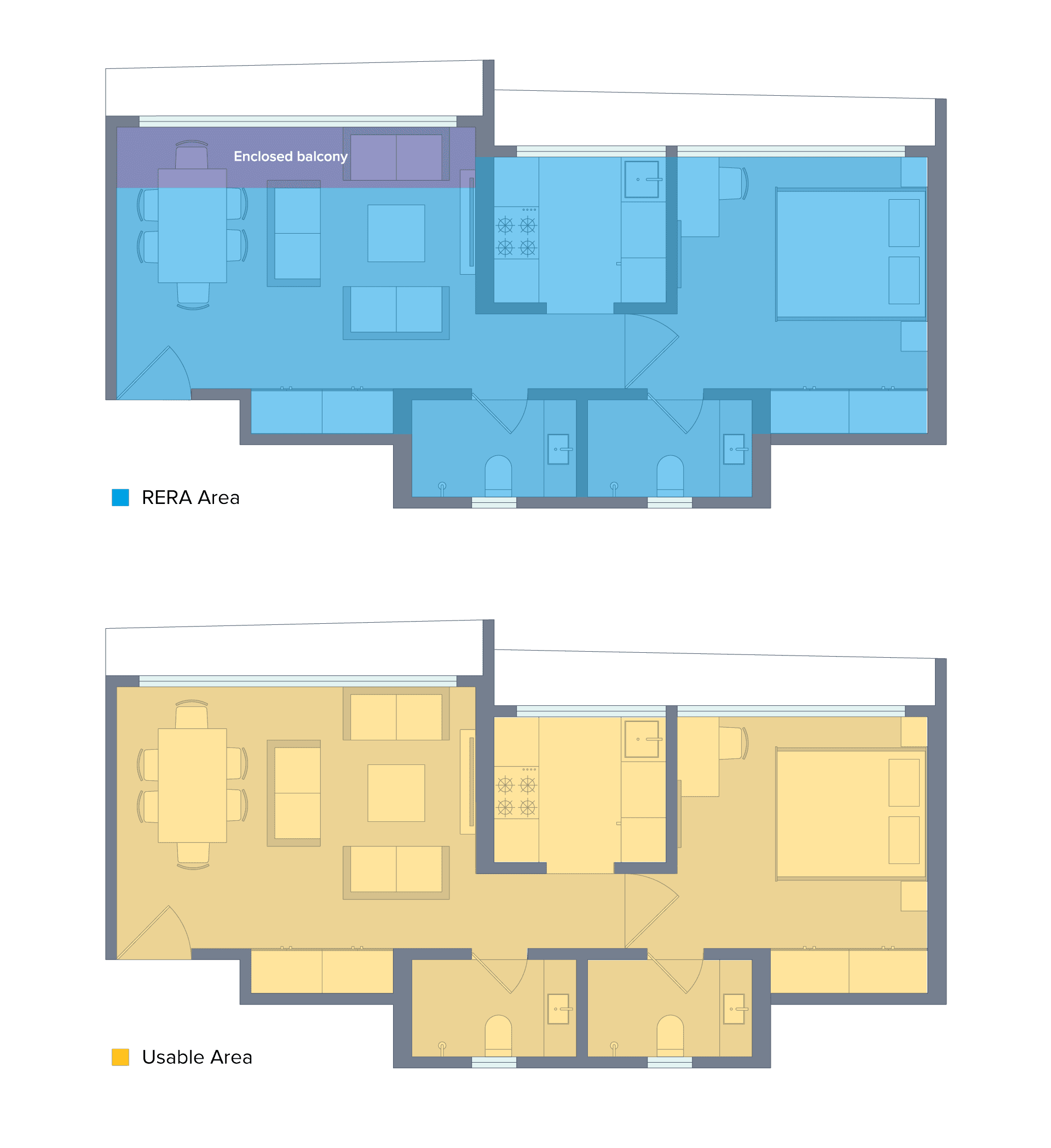Introduction:
When it comes to buying a property, one of the most critical aspects to consider is the property area. The carpet area is the net usable floor area of an apartment, excluding the area covered by the walls, elevators, staircases, and other common areas. However, the term ‘Carpet Area’ may have different connotations in different contexts, especially in the real estate sector. To bring more clarity and transparency to the property buying process, The Real Estate Regulation and Development (RERA) Act, 2016; introduced specific terms and definitions related to property measurements. One such term is ‘RERA Carpet Area.’ This blog post aims to provide proper information about the RERA Carpet Area, its importance, and how it differs from other area measurements.
Properties for sale in Hyderabad: CLICK HERE
What is the RERA Carpet Area?
The Real Estate Regulation and Development Act (RERA) 2016 defines the carpet area as the net usable floor area of an apartment, excluding the area covered by the external walls, and balcony open terrace area. In other words, the RERA Carpet Area refers to the actual area within the apartment where you can lay a carpet. This definition is intended to provide a uniform and transparent method of calculating the usable area of an apartment, helping homebuyers make informed decisions.
Why is RERA carpet area important?
The introduction of the RERA Carpet Area is significant for several reasons:
- Transparency: RERA Carpet Area brings more transparency to the real estate sector by providing a uniform method for calculating the usable area of an apartment. This uniformity ensures that homebuyers can compare properties on an equal footing without the confusion created by different area measurement terms.
- Accurate Cost Estimation: Knowing the RERA Carpet Area helps homebuyers estimate the actual cost of the property more accurately. It also enables them to calculate the cost per square foot, which can be useful when comparing different properties.
- Infrastructure and Amenities: The RERA Carpet Area definition excludes the area covered by walls, elevators, staircases, and common areas. This clarification ensures that homebuyers are aware of the actual space they will be occupying and the shared infrastructure and amenities they will have access to.
How does the RERA carpet area differ from other area measurements?
In the real estate sector, different terms are used to describe various area measurements. Understanding these terms and how they differ from the RERA Carpet Area is crucial for homebuyers.
- Super Built-up Area: This term refers to the total area of the apartment, including the walls, balcony, verandah, and open terrace, along with a proportionate share of common areas such as lobbies, staircases, and elevators. The super-built-up area is typically higher than the RERA carpet area.
- Built-up Area: The built-up area includes the area covered by the walls, balcony, verandah, and open terrace, but it does not include common areas such as lobbies, staircases, and elevators. The built-up area is usually lower than the super-built-up area and higher than the RERA carpet area.
- Plinth Area: The Plinth Area is the covered area of the apartment, measured at the floor level. It includes the area covered by the walls, balcony, verandah, and open terrace but does not include common areas such as lobbies, staircases, and elevators. The plinth area is typically equal to or slightly higher than the built-up area.
Conclusion:
Understanding the RERA Carpet Area is crucial for homebuyers looking to make informed decisions when purchasing a property. By providing a uniform and transparent method for calculating the usable area of an apartment, RERA aims to bring more clarity and transparency to the real estate sector. Homebuyers should ensure that they are aware of the RERA Carpet Area, Super Built-up Area, Built-up Area, and Plinth Area to make accurate cost estimations and compare properties effectively.






